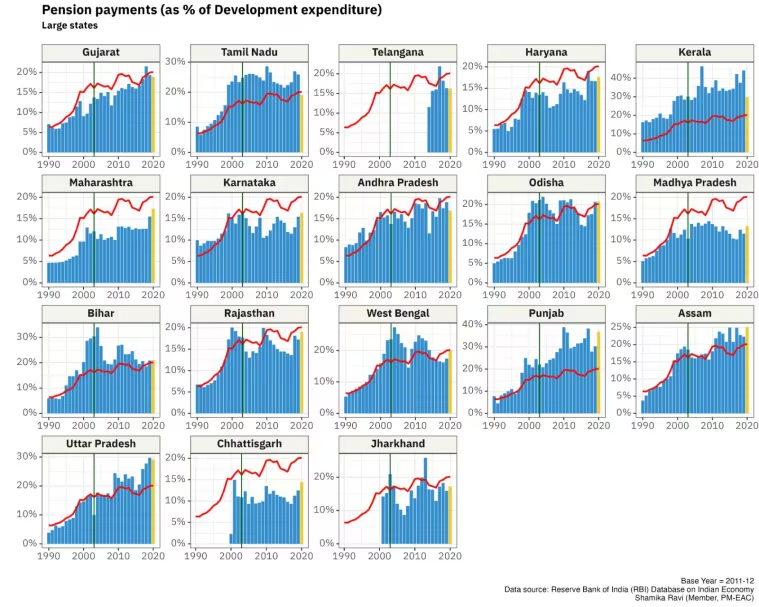Why in the News?
- India plans to launch a national carbon market in 2026, which will encourage technologies like biochar that help remove CO₂ from the atmosphere.
- India produces huge amounts of agricultural residue and municipal waste, which are often burned or dumped, causing pollution but also providing material to make biochar.
| National Carbon Market 1. A National Carbon Market is a system where companies can buy and sell carbon credits to meet emission targets set by the government. 2. Its goal is to reduce greenhouse gas emissions by putting a price on carbon pollution, encouraging industries to pollute less. 3. Companies that emit less than their allowed limit can sell their extra carbon credits to those who exceed their limits. 4. India is developing its own carbon market to help meet climate goals and promote sustainable industrial growth. |
Key Highlights
- Raw material and production potential
- India produces over 600 million tonnes of agricultural residue and more than 60 million tonnes of municipal solid waste annually.
- Using 30–50% of this waste could produce 15–26 million tonnes of biochar and remove about 1 gigatonnes (Gt) of CO₂-equivalent each year.
- CO₂-equivalent: This means the total greenhouse gas impact converted to the effect of carbon dioxide.
- Byproducts and energy potential
- Biochar production also creates syngas (20–30 million tonnes) and bio-oil (24–40 million tonnes).
- Using syngas could generate around 8–13 terawatt-hours (TWh) of electricity, which is 5–0.7% of India’s annual power generation.
- This could replace 4–0.7 million tonnes of coal yearly, reducing coal use.
- Bio-oil could replace 12–19 million tonnes of diesel or kerosene (about 8% of their usage), lowering crude oil imports and cutting fossil fuel emissions by more than 2%.
- Long-term carbon storage and climate benefits
- Biochar can keep carbon trapped in soil for 100 to 1,000 years because of its strong and stable nature, making it a good carbon sink.
- Adding biochar to soil can reduce emissions of nitrous oxide (N₂O) by 30–50%.
- Nitrous oxide is a potent greenhouse gas with 273 times the warming effect of CO₂.
- Applications in different sectors
- Agriculture: Biochar improves water retention, especially in dry or poor soils, and boosts soil organic carbon, helping restore degraded land.
- Construction: Adding 2–5% biochar to concrete improves strength, increases heat resistance by 20%, and stores about 115 kg of CO₂ per cubic metre in the building material.
- Wastewater treatment: India produces more than 70 billion litres of wastewater daily, of which 72% remains untreated. One kilogram of biochar can treat 200–500 litres of wastewater, meaning a demand of 5–6.3 million tonnes of biochar for this purpose.
- Economic and social benefits
- Setting up biochar production at the village level could create around 520,000 rural jobs.
- Biochar use lowers fertiliser needs by 10–20% and increases crop yields by 10–25%, benefiting farmers economically.
Implications for the Economy
- Energy and power benefits
- Using syngas to generate electricity could reduce coal use by up to 7 million tonnes per year, improving energy security and reducing pollution.
- This distributed energy source supports rural electrification and reduces pressure on central power grids.
- Reducing oil imports and improving trade balance
- Bio-oil replacing diesel and kerosene cuts crude oil imports, easing India’s balance of payments and reducing vulnerability to global oil price changes.
- Lower fossil fuel dependence supports cleaner energy goals.
- Boosting rural incomes and agriculture
- Yield increases and fertiliser savings improve farmer incomes and reduce farming costs.
- Creating jobs through village-level biochar equipment helps rural economic development.
- Health and environment cost savings
- Avoiding residue burning reduces air pollution and greenhouse gases, lowering health costs linked to respiratory diseases.
- Treating wastewater with biochar reduces pollution of water bodies, saving money on cleanup and improving public health.
- Climate finance opportunities
- If biochar is recognised under India’s carbon market, farmers and investors can earn carbon credits for verified emissions reduction.
- This makes biochar projects financially attractive and scalable.
Challenges and Way Forward
| Challenge | Why it is a barrier | Possible solutions |
| No standard feedstock market | Different types and qualities of waste make biochar production inconsistent, discouraging buyers. | Develop regional feedstock standards and traceability systems tailored to local crops and climates. |
| Inconsistent carbon accounting and weak MRV | Uncertainty about how much carbon is really stored reduces trust in credits. | Create standardised Monitoring, Reporting, Verification (MRV) protocols to measure carbon in biochar accurately. |
| Limited R&D and technology issues | Pyrolysis methods and yields vary, affecting biochar quality and efficiency. | Fund research for optimising production technologies and biomass use for local conditions. |
| No proven business models or finance | Lack of clear profit models makes investors hesitant. | Support blended finance, outcome-based contracts, and government guarantees to reduce risk. |
| Policy silos across sectors | Agriculture, energy, and climate policies do not coordinate on biochar. | Integrate biochar into crop residue management, urban bioenergy, and State Climate Action Plans. |
| Low awareness and skills | Farmers and local bodies often do not know biochar’s benefits or how to use it. | Launch extension services, demonstration farms, and training programs. |
| Logistics and decentralisation challenges | Transport and seasonal feedstock availability raise costs. | Promote village-level modular units and local feedstock aggregation. |
| No clear carbon credit rules | Carbon markets currently do not have clear methods for crediting biochar. | Recognise biochar officially in India’s carbon market with pilot registries and crediting rules. |
Conclusion
Biochar offers a science-backed, multi-sector approach to reduce emissions, improve soil health, treat wastewater, generate energy, and create rural jobs. Its potential to remove around 0.1 gigatonnes of CO₂-equivalent annually depends on clear standards, good measurement systems, coordinated policies, and financial incentives. Recognition in India’s 2026 carbon market could unlock large-scale climate and development benefits by turning waste into valuable carbon sinks and energy sources.
| Ensure IAS Mains Question Q. Discuss the potential of biochar as a tool for carbon removal and sustainable development in India. What are the key challenges in its adoption and how can these be addressed? (15 marks) |
| Ensure IAS Prelims Question Q. Consider the following statements with reference to Biochar: 1. Biochar can reduce nitrous oxide emissions, a gas with much higher warming potential than CO₂. 2. The byproducts of biochar production can generate electricity and substitute fossil fuels, reducing emissions further. 3. Biochar production has no role in wastewater treatment or construction sectors. 4. Lack of standardised carbon accounting prevents biochar’s large-scale carbon crediting. Which of the statements given above is/are correct? a) 1, 2 and 3 only b) 1, 2 and 4 only c) 2, 3 and 4 only d) 1, 3 and 4 only Answer: b) 1, 2 and 4 only Explanation: Statement 1 is correct: Because biochar reduces nitrous oxide emissions, which have about 273 times the warming potential of CO₂, making its mitigation important. Statement 2 is correct: As biochar production generates syngas and bio-oil, which can be used to produce electricity and replace fossil fuels, lowering emissions. Statement 3 is incorrect: Because biochar also finds applications in wastewater treatment and construction, helping reduce pollution and acting as a low-carbon building material. Statement 4 is correct: Lack of standardised carbon accounting and monitoring systems currently limits biochar’s representation in carbon credit markets. |





